In a game which saw a surprise as early as move one, defending World Champion Ju Wenjun had a dominating position but allowed Lei Tingjie to save a draw in the endgame. Lei still maintains her lead: 4:3
This marked the first game of the second part of the match, which transitioned from the coastline to central China. Following six games in Shanghai, the players had two days to relocate and adapt to Chongqing, Lei Tingjie’s hometown.
The defending Women’s World Champion Ju Wenjun, being one point down, needed to make a comeback. Playing as Black, she sprang a surprise on move one – 1.e4 c6 – going for the Caro-Kann, an opening never played by Ju in top-level classical games. As she made the move, Lei put a hand on her head and looked to the side, away from the board, realigning her focus to an opening that she wasn’t expecting.
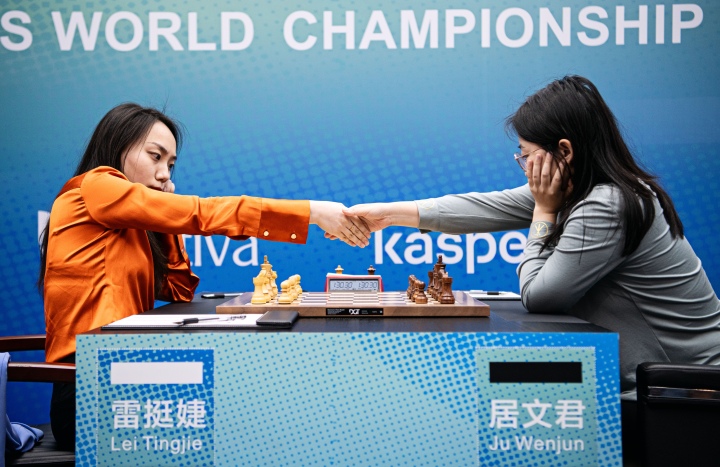
After the first opening moves, White had more spatial control and initiative. At one point, Lei decided to sacrifice a pawn for a strong centralised knight on d6 and more pressure across the board, hoping to mount a strong push against the black king. She indeed got adequate compensation, but hardly more. Unfortunately for Lei, she overcommitted at some point, overlooked Black’s threat and ended significantly worse. For the first time in the match, Ju was considerably better. Her body language was clearly relaxed – she was relishing her position.
Black was now pressing hard and making concrete threats against White who was struggling to defend her overextended position. Yet, rather than escalating the attack, Ju made a questionable but understandable decision to exchange the queens and entered an endgame where she held a two-pawn advantage. Black was still better, however, White got some real drawing chances thanks to her active rook. 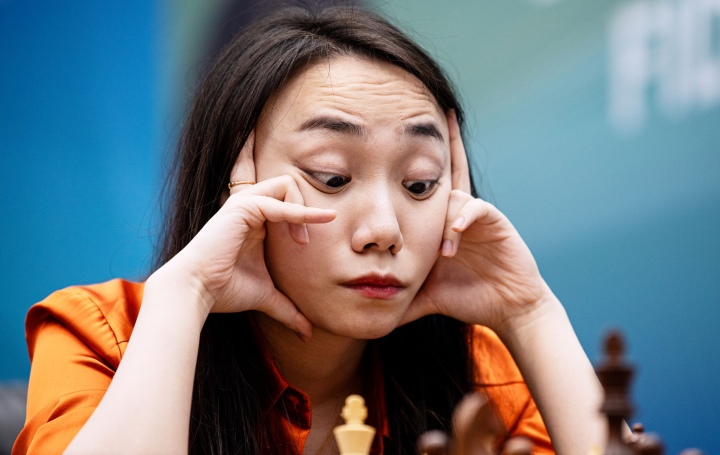
As the endgame unfolded, Ju’s advantage gradually dissipated. Lei managed to regain a pawn, activate her knight and king, and was off the hook. Ju leaned back in her chair, hands above her head, coming to terms with what had happened.
After Lei exchanged her c6-pawn for Black’s a3-passer a draw became virtually inevitable: despite being a pawn down, White’s pieces were well coordinated and the black king was cut off on the eighth rank.
In the final stage of the game, Ju set a trap for White to which Lei responded with a brave but well-calculated move giving up her last remaining pawn. Black was again two pawns up but White’s active pieces offered sufficient counterplay. The game concluded in dramatic fashion with a draw on move 65.
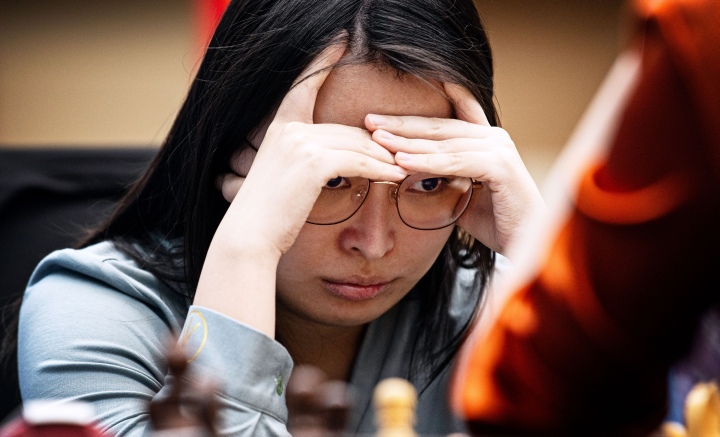
Commenting on the game immediately afterwards, Lei said that she wasn’t surprised by her opponent playing Caro-Kann in the opening, “as she played that a few weeks ago”. Lei noted that she “underestimated Ju’s counterplay” in the game, adding that she feels “dizzy” from everything.
Ju said that she was clearly better after 29.g4. “I just tried to play the game with a good fighting spirit and focus. As for the results – I don’t expect too much”, the defending World Champion noted.
A big miss by Ju and a great save by Lei.

Game eight will start on Sunday, 16th July, at 3 PM Local Time in Chongqing (GMT +8).
Here follows a closer look at game seven of the match:
Lei was White, and she opened with, now her standard choice in the match, 1.e4.
The first move ceremony was officiated by Dana Reizniece-Ozola, Deputy Chair of the FIDE Management Board, and Liu Xiaoqiang, Secretary of the Changshou District Committee and member of the Changshou Economic Development Zone Party Committee.
The defending Women’s World Champion, Ju, immediately responded with 1…c6 – entering the Caro-Kann defence. A big surprise from Ju, but the challenger wasn’t surprised, as she quickly proceeded and was soon ahead on time. Caro-Kann is a well-known line to Lei, who also plays it as an opening choice as Black. On move 12, the challenger sprang a surprise of her own and introduced a novelty by castling short. Usually, with h2-h4 already played, White evacuates the king to the queenside.
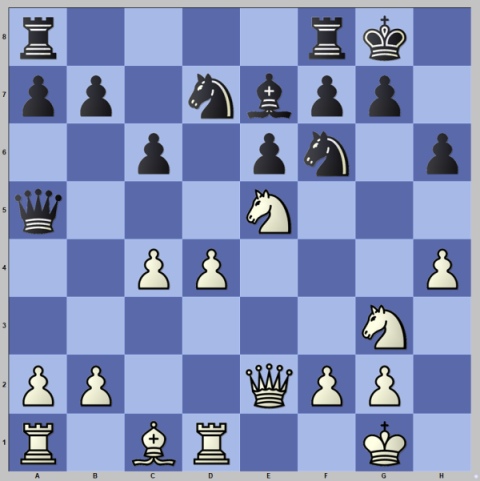
White has a comfortable space advantage – she controls the centre, and her pieces are slightly more active than Black’s. On the other hand, Black has a solid position with no real weaknesses. The fact that White has pushed forward to occupy space made her pieces more exposed to an attack.
It was the first point when Lei started spending more time on the clock. Eventually, she came up with the idea of lifting her rook over the third rank, but it doesn’t seem the best option.
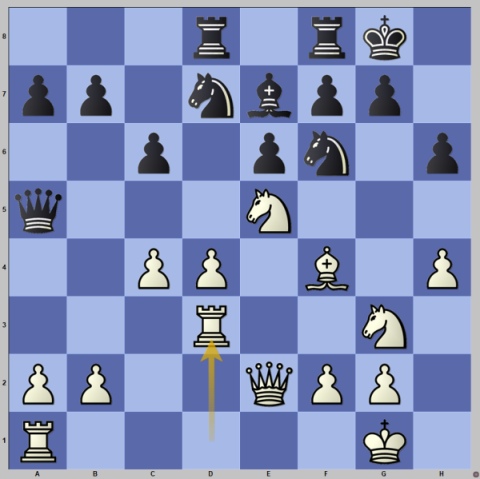
16.Rd3. Pawn moves – a3, b4 – were considered as a better choice here. After 16…Nxe5 17.dxe5 Nh7, the position is even. Lei now spent nearly half an hour thinking on an important decision: she gave up a pawn for a strong knight on d6.
18.Ne4 Rxd3 19.Qxd3 Bxh4 20.Nd6
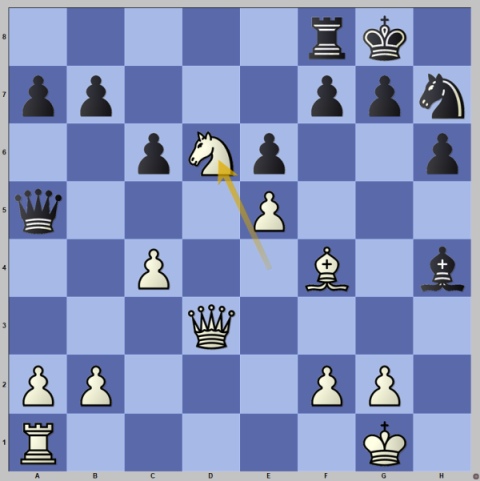
The question now was: Will the strong knight be enough to compensate for a pawn? The answer is yes. White indeed has sufficient compensation but hardly more. In subsequent play, Lei fortified her d6-knight.
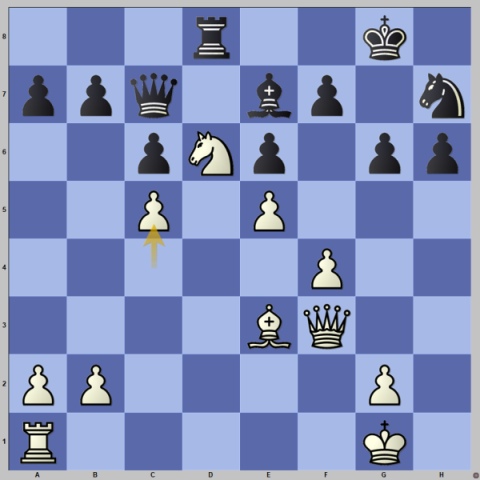
White has pressure, a dominating and well-defended knight on d6, and Black has a knight on h7, completely sidelined. Still, White’s position depends on keeping the initiative, and it’s on her to do that, while Black needs just to hold on and counter. Both sides had about 35 minutes on the clock now, gradually approaching time trouble. It looks like Lei became more ambitious at this point.
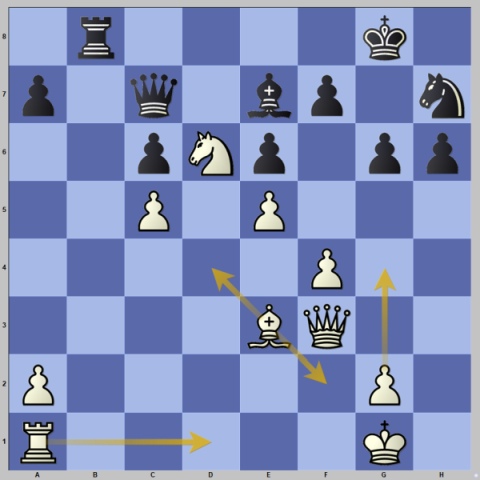
29.g4? Lei overcommitted with this aggressive move. There was no need for such drastic measures as after 29. Bd4 or 29. Bf2, the position is roughly equal. Now after 29…Qa5! the situation has turned in Black’s favour. White can’t take on c6 because 30…Qc3, attacking a rook and a bishop.
In addition, the b8-rook can get to the second rank and the c5-pawn is hanging with a pin on the diagonal, aiming at White’s king. Now Lei needed to play very precisely.
“In this position, we can’t totally rely on the computer”, noted Grandmaster Alik Gershon. He explained: In such positions, these evaluations by the computer can go strongly up or down only because there is some very specific long line which, for a human, is difficult to calculate. That means the players on the board wouldn’t be able to evaluate the position in the same way”.
Eventually, Ju penetrated with her rook to the second rank, and it became obvious that Black was clearly better. Lei Tingjie was holding her head, deep in thought.
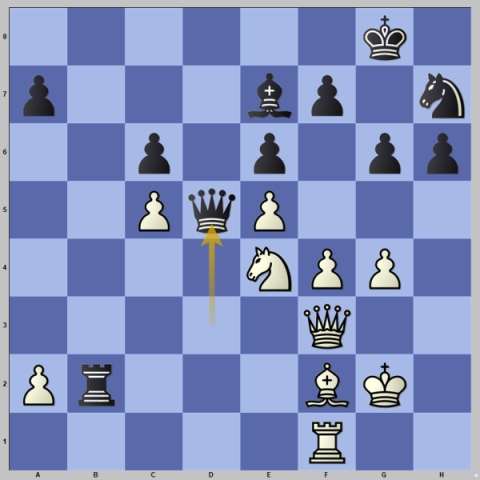
33…Qd5 “A brave move”, noted Grandmaster Xu Yi, “as it gives White 34.Rd1 and then the White reaching the seventh rank, but actually, Qd5 is strong”.
Indeed, after 34.Rd1 Qxa2 Black picked up another pawn. White finally made the f5-push in response, but it was too late. Somewhat surprisingly, this desperate attack worked for the challenger.
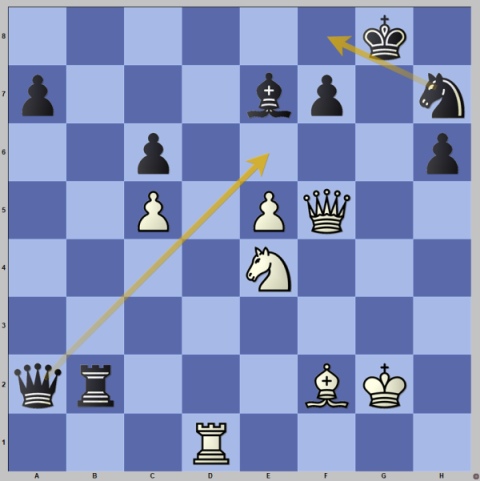
Black is two pawns up, has attacking pieces on the second line, and his king is safer. With this in mind, the consolidating move 37…Nf8 looks very strong for Ju. Instead, the champion decided to simplify and play on material advantage, significantly easing the pressure on White.
After 37…Qe6? 38.Qxe6 fxe6 39.Rd7 Bh4 40.Kf1 The two reached the first time control and gained an extra 30 minutes.
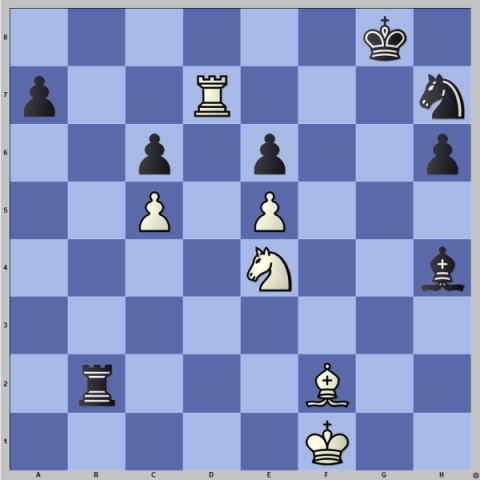
Black is still better, but now White has much more chances for a draw than before as her king is out of danger while the rook is very active. As the endgame progressed, Black’s advantage was gradually evaporating.
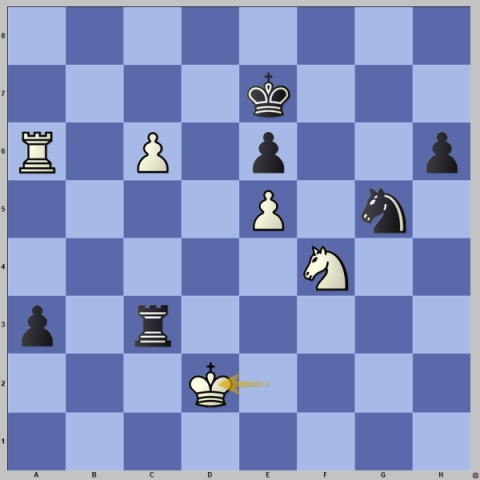
Ju has to exchange her a3-pawn for White’s c6-pawn as she can’t make progress. It was a great relief for Lei as now a draw became the most likely outcome. Despite emerging with two extra pawns again, Black had to stomach a draw as White’s pieces were way too active.
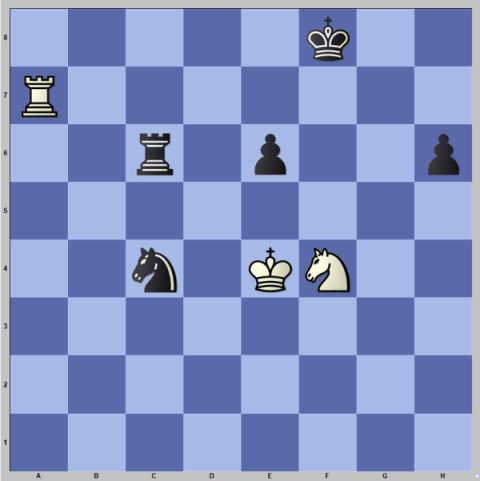
After 59. Ng6+ Ke8 60. Kd4 Nb6 61. Re7+ Kd8 62. Rh7 Nd7 63. Rxh6 e5+ 64. Nxe5 Rxh6 65. Nf7+, all the pawns were off the board, and the two ended with just the knights and agreed to a draw.
Text: Milan Dinic
Photos: Stev Bonhage
Official website: womenworldchampionship.fide.com/
About the Match
The match will take place in two Chinese cities, where each of the contestants comes from. The first half of the match will be in Shanghai, while the second half takes place in Chongqing.
The match will consist of 12 games of classical chess. The payers will have 90 minutes for the first 40 moves, followed by 30 more minutes for the rest of the game, plus a 30-second increment per move starting on move one.
Players cannot offer a draw before they reach the 41st move.
In case of a tie, there will be the following tiebreaks:
Four games with a 25+10 time control.
Two games with a 5+3 time control.
Two more games with a 5+3 time control.
One game with a 3+2 time control, until a winner is determined.
The prize fund is €500,000, with €300,000 going to the winner and the remaining €200,000 to the runner-up.
If the outcome of the match is decided upon tiebreaks, the winner will take €275,000, while the runner-up will receive €225,000.








